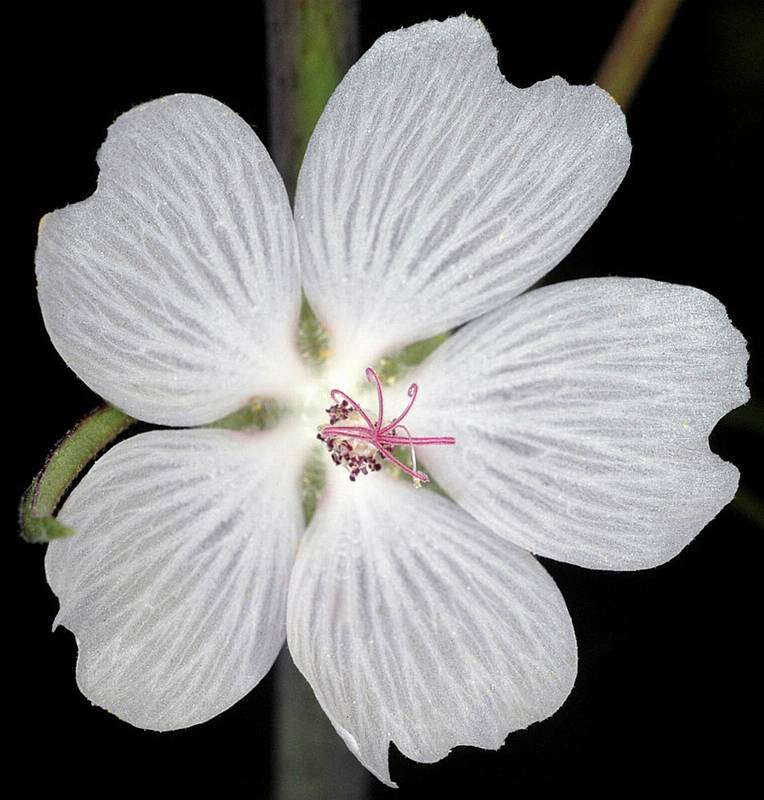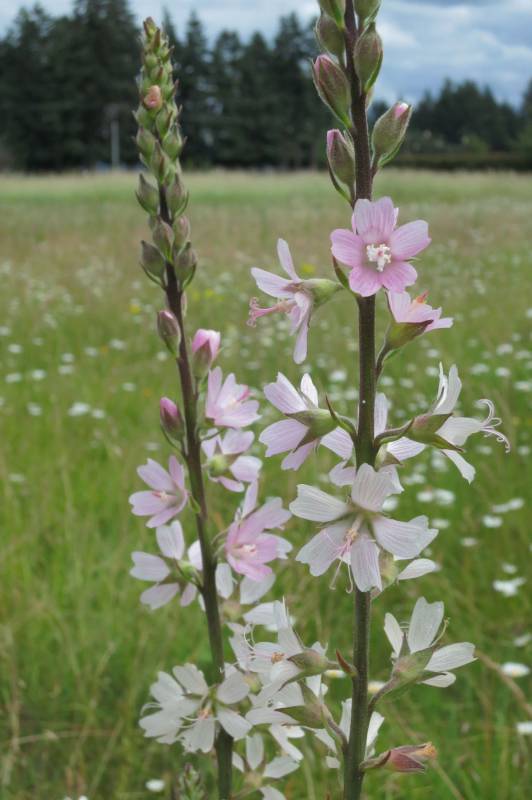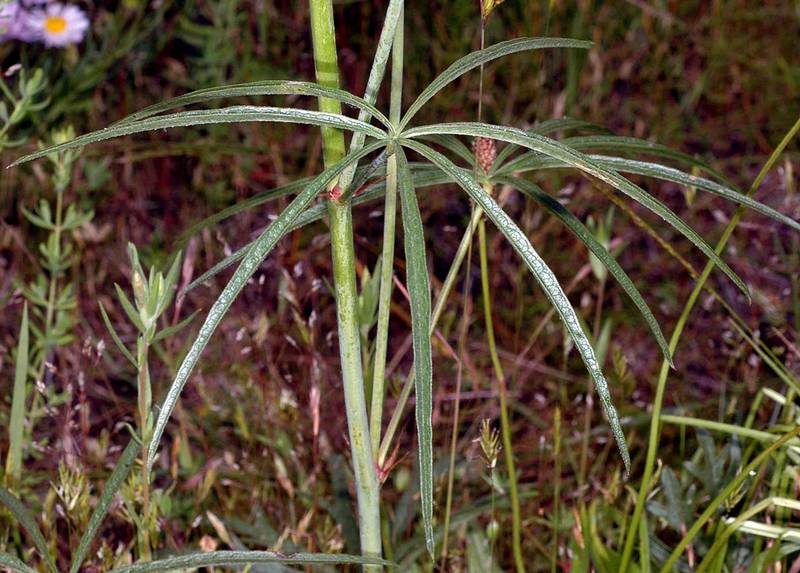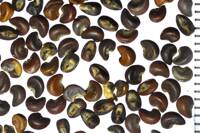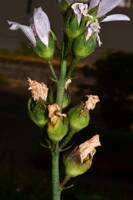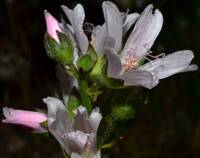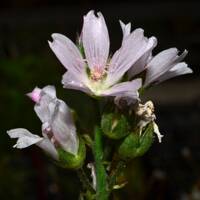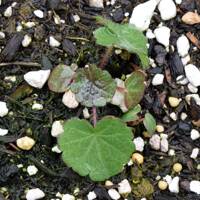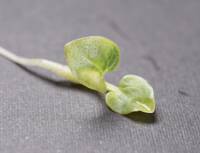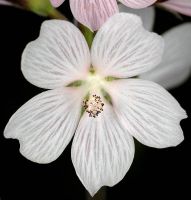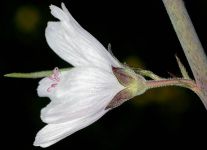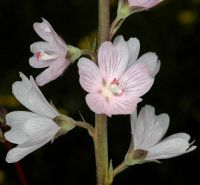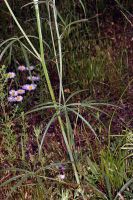Distribution: Occurring west of the Cascades crest in Washington, where escaped from cultivation; endemic to the Willamette Valley of Oregon.
Habitat: Dry fields and roadsides.
Flowers: May-July
Origin: Introduced from Oregon
Growth Duration: Perennial
Conservation Status: Review Group 1 in Washington (WANHP)
Pollination: Bumblebees, bees, beetles
Herbaceous perennial from a thick taproot and short rhizome, the stems 0.5-2 m. tall, usually with short, stiff hairs
Leaves alternate, palmately deeply 7- to 9-lobed, 5-15 cm. broad, the lobes again lobed and toothed.
Inflorescence an open, elongate raceme, the pedicels 3-6 mm. long; calyx 5-lobed, stellate or stellate and bristly; petals 5, nearly white to pinkish-orchid, 12-25 mm. long, clawed, with marginal hairs on the claws, shallowly notched; stamens 40-70, freed from the staminal tube in 2-3 series, the stamens united in groups; ovary superior, the carpels 5-10 in a ring around a central axis; styles equal to the number of carpels, elongate, stigmatic full length.
Capsule 3.5 mm. long.
Publication: Bulletin of the California Academy of Sciences 1(3): 76-77. 1885.
Sidalcea sylvestris A. Nelson
PNW Herbaria: Specimen records of Sidalcea campestris in the Consortium of Pacific Northwest Herbaria database
WA Flora Checklist: Sidalcea campestris checklist entry
OregonFlora: Sidalcea campestris information
E-Flora BC: Sidalcea campestris atlas page
CalPhotos: Sidalcea campestris photos

